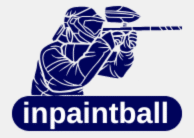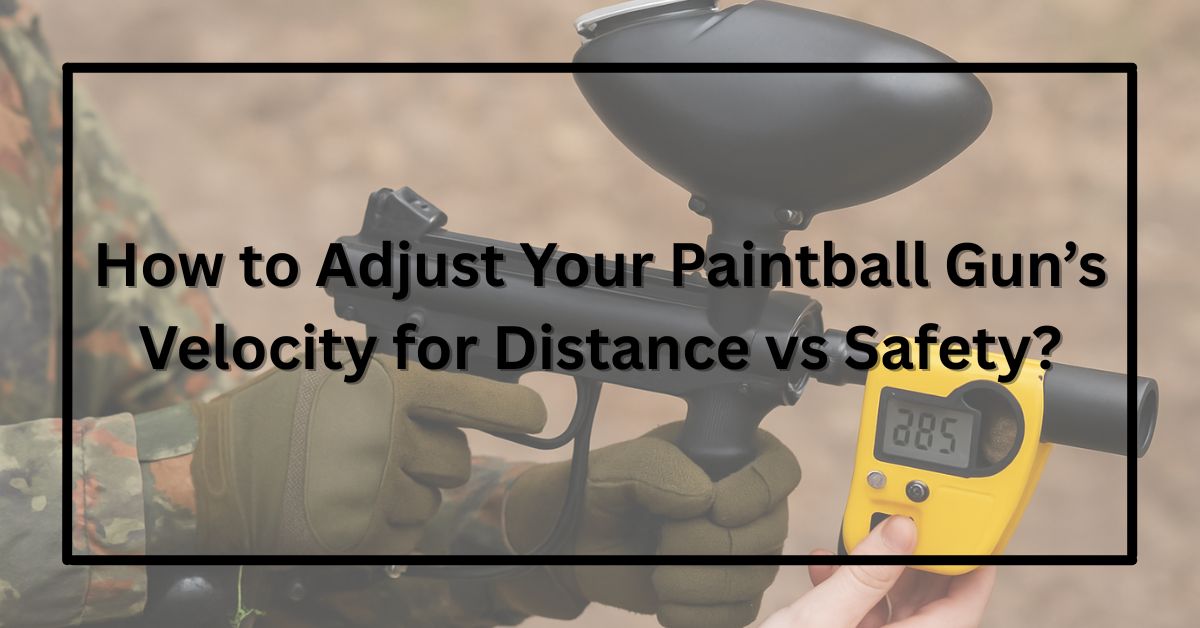Adjusting your paintball gun’s velocity is one of the most important steps for achieving the perfect balance between distance and safety. Too high, and you risk hurting other players or damaging paintballs; too low, and your shots won’t travel far enough to hit your target effectively.
Understanding how to adjust and control your marker’s velocity properly ensures consistent performance, improved accuracy, and safer gameplay for everyone.
Understanding Paintball Gun Velocity
Paintball gun velocity refers to how fast a paintball travels when fired, typically measured in feet per second (FPS).
- A higher FPS means paintballs travel farther and hit harder.
- A lower FPS reduces distance and impact force, making gameplay safer for close-range combat.
Most paintball fields enforce a velocity limit between 260 and 300 FPS, with 280 FPS being the most common setting for safety and consistency.
Why Proper Velocity Matters?
Properly adjusting your paintball gun’s velocity isn’t just about performance; it’s about safety and fair play.
Here’s why it matters:
- Player Safety: Overpowered markers can cause painful welts or injuries.
- Accuracy & Control: Consistent velocity means more predictable shots.
- Paintball Durability: Paintballs fired at high speeds are more likely to break mid-air or inside the barrel.
- Rule Compliance: Most fields perform regular chronograph checks; failing them can result in disqualification.
Tools You Need for Adjustment
Before you start adjusting your marker, make sure you have the following tools:
- Chronograph: Measures your marker’s FPS accurately.
- Allen Key / Adjustment Tool: Used to turn the velocity screw on your marker.
- Properly Pressurized Air Tank: Either CO₂ or HPA (High-Pressure Air).
- Clean Barrel & Quality Paintballs: Ensures consistent readings and prevents misfires.
Step-by-Step Guide to Adjusting Velocity
1. Chronograph Your Marker
Always start by measuring your gun’s current velocity using a chronograph. Fire three to five shots and note the average FPS.
2. Locate the Velocity Adjustment Screw
Most markers have a small screw or dial located near the rear bolt, regulator, or back cap. Check your gun’s manual if you’re unsure.
3. Turn to Adjust Velocity
- Clockwise: Increases FPS (more power and distance).
- Counterclockwise: Decreases FPS (less impact and safer play).
4. Test After Each Adjustment
Fire three shots through the chronograph again after every small adjustment. Don’t turn the screw more than 1/8th of a turn at a time to avoid over-adjusting.
5. Fine-Tune for Consistency
Once you’re within the desired FPS range, fire multiple shots to confirm consistent readings. The goal is a steady, repeatable velocity for reliable shooting.
Adjusting for Distance vs Safety
- For Greater Distance:
- Slightly increase FPS within legal limits (around 290–300 FPS) to achieve longer-range shots, ideal for outdoor woodsball games.
- For Close-Range or Indoor Play:
- Reduce FPS to 260–270 FPS to minimize impact and ensure safe gameplay in smaller arenas or speedball fields.
- Balanced Setup:
- For most players, 280 FPS is the sweet spot, offering excellent range, accuracy, and safety across all environments.
Factors That Influence Velocity
Even with perfect adjustments, several environmental and mechanical factors can affect your marker’s velocity:
- Air Pressure & Tank Type: CO₂ tanks fluctuate more with temperature than HPA tanks.
- Weather Conditions: Cold air thickens CO₂, lowering pressure; warm air increases it.
- Paintball Size & Barrel Match: Oversized or undersized paintballs affect airflow and velocity.
- Marker Maintenance: Dirty barrels, worn O-rings, and debris can reduce firing efficiency.
Common Mistakes to Avoid
- Skipping the Chronograph: Never “guess” your velocity; always measure it.
- Over-Adjusting: Turning the velocity screw too much can cause internal damage.
- Ignoring Field Rules: Fields may have strict FPS caps; breaking them can get you disqualified.
- Using Old or Brittle Paintballs: They can break in the barrel and give false readings.
Field Rules and Safety Compliance
Almost every paintball field requires players to chronograph their markers before play. The typical limit is 280 FPS, with a maximum of 300 FPS.
Failing to comply with these limits can lead to:
- Penalties or ejection from the field.
- Banned entry for repeated violations.
- Risk of injury to other players.
Always re-check your velocity after refilling air or switching tanks, small pressure differences can alter FPS levels.
Tips for Consistent Performance
To keep your paintball gun performing safely and efficiently:
- Clean and oil your marker after every use.
- Use high-quality paintballs suited to your barrel bore size.
- Avoid over-pressurizing tanks.
- Chronograph multiple times throughout the day, especially if temperatures fluctuate.
These small steps ensure reliable, safe gameplay every time you hit the field.
Conclusion:
Adjusting the velocity of your paintball gun is more about precision, fairness, and safety, not simply power. By fine-tuning your FPS for each location, you may increase your shooting distance without jeopardizing others’ safety.
Whether you’re gearing up for a woodsball tournament or an indoor speedball practice, remember that the top players shoot intelligently, not hard.
So take your chronograph, make some careful adjustments, and enjoy your next paintball game with confidence and control.

